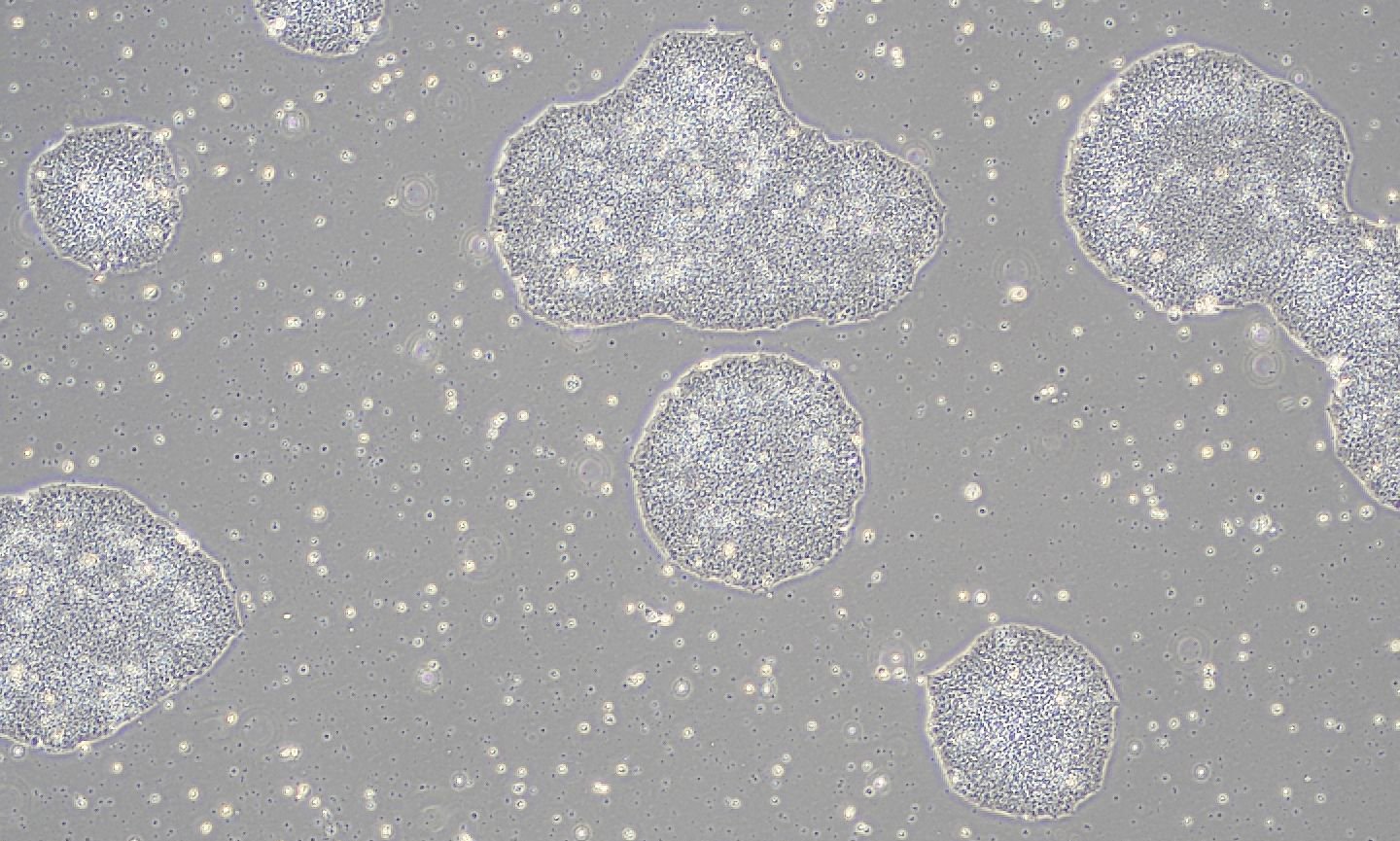Provision of HLA Genome-edited iPS Cell Stock for Clinical Use
RESEARCHES

1. Key Points
- Provision of an HLA*1) genome-edited iPS cell stock for clinical use started on June 14 (Wed).
- The stock was made using an HLA homozygous iPS cell stock*2) with a proven track record in clinical use and genome editing technology to delete specific HLA genes*3).
- Differentiated cells generated from the HLA genome-edited iPS cell stock is expected to have a lower risk of immune rejection when transplanted.
2. Background: About HLA homozygous iPS cell stock for clinical use
The Center for iPS Cell Research and Application (CiRA), Kyoto University, which is an affiliate of the CiRA Foundation, has been promoting the iPS cell stock project*4) for regenerative medicine since fiscal year 2013. The CiRA Foundation took over management of the project since starting its activities in April 2020.
Until now the iPS cell stock project has been manufactured using the blood of healthy donors who are homozygous*5) for the first to fourth most common HLA types in the Japanese population. Following various quality tests, we have been providing these cells for clinical use to academia and companies since August 2015. Clinical trials are currently being conducted in more than 10 projects.
3. About the HLA Genome-edited iPS Cell Stock for Clinical Use
By disrupting HLA-A, HLA-B, and HLA-Class II, which are key molecules for immunity, differentiated cells derived from this iPS cell stock are expected to have less risk of immune rejection by the host's killer T cells*7) and helper T cells*8) during transplantation. Other HLA molecules, such as HLA-C and HLA-E, remain intact, which is expected to reduce the risk of NK cell-mediated immune rejection.
On the other hand, since the HLA genome-edited iPS cell stock alone may not be capable of suppressing all immune reactions, the safety of the cells made from this stock should be carefully examined in the future. The CiRA Foundation is providing the stock to research institutions and companies for research and development on the safety and efficacy of the stock in regenerative medicine.
4. Provision of Genome-Edited iPS Cell Stock for Clinical Use
More information about the HLA genome-edited iPS cell stock can be seen
HLA-genome-edited iPS cells
How to Use the Stock
5. Future work
We will prepare new genome-edited iPS cell stocks in consultation with partner institutions.
6.Funders
Research Center Network for Realization of Regenerative Medicine, Japan Agency for Medical Research and Development (AMED)
7. Glossary
*1)HLA
HLA, or Human Leukocyte Antigen, is classified into Class I (present antigens to killer T cells), which includes the A (HLA-A), B (HLA-B), and C (HLA-C) loci present on almost all cells, and Class II (present antigens to helper T cells), which includes the DR (HLA-DR), DQ (HLA-DQ), and DP (HLA-DP) loci present on a limited number of cells. -DR) present on a limited number of cells. When a cell or organ is transplanted from a donor who has an HLA type different from the patient, the patient's immune system recognizes the transplant as a "foreign body", resulting in an immune reaction. Therefore, matching the HLA type between the donor and patient is critical to avoid immune rejection.*2)HLA homozygous iPS cell stock
Clinical iPS cells that are manufactured from healthy donors who are homozygous (identical genes of paternal and maternal origin) for the HLA-A, HLA-B, and HLA-DR loci. The transplantation of cells derived from this stock is expected to minimize immune rejection. It is estimated that 90% of the Japanese population would benefit from this stock if iPS cells were made from unique donors representing the most common 140 HLA gene types in the Japanese population.*3)HLA genome editing technology
HLA genome-edited iPS cells were produced using technology developed by Associate Professor Akitsu HOTTA and Professor Shin KANEKO of CiRA. The original research publications can be readTargeted Disruption of HLA Genes via CRISPR-Cas9 Generates iPSCs with Enhanced Immune Compatibility
Generation of hypoimmunogenic induced pluripotent stem cells by CRISPR-Cas9 system and detailed evaluation for clinical application
*4)iPS Cell Stock Project for Regenerative Medicine
iPS Cell Stock Project for Regenerative Medicine A project to manufacture, store and provide quality iPS cells from healthy donors for regenerative medicine. CiRA started the project on a full-scale basis in 2013, and in April 2020, it was transferred to the CiRA Foundation.*5)HLA homozygous
Because HLA types are so diverse, with tens of thousands of possible combinations, the probability of matching a donor and host in Japan is nearly one in a few hundred to sometimes one in nearly a million donors depending on the rarity of the HLA type. An individual who inherited the same HLA type from the father and mother is said to be "HLA homozygous. For example, for the A locus, there are A1, A2, A3...and so on. An HLA homozygous person for A1 is thought to be a matching host for patients who are A1A1, A1A2, A1A3, etc., increasing the probability of matching.*6)CRISPR-Cas9 genome editing technology
Genome editing technology is used to modify DNA sequences by inducing DNA damage at specific target sites in the genome. The DNA can be cut at the location when using CRISPR (Clustered Regularly Interspaced Short Palindromic Repeat)-Cas9, a DNA-cutting enzyme, and guide RNA that directs Cas9 to the desired location for cutting.*7)Killer T cells
A type of immune cell. It responds to and eliminates foreign and diseased cells.*8)Helper T cells
A type of immune cell. It activates killer T cells after recognizing foreign antigens.Inquiries
The CiRA Foundation
Public Relations Group, Planning Promotion Office
E-mail:contact*cira-foundation.or.jp
(please change the * to @)
